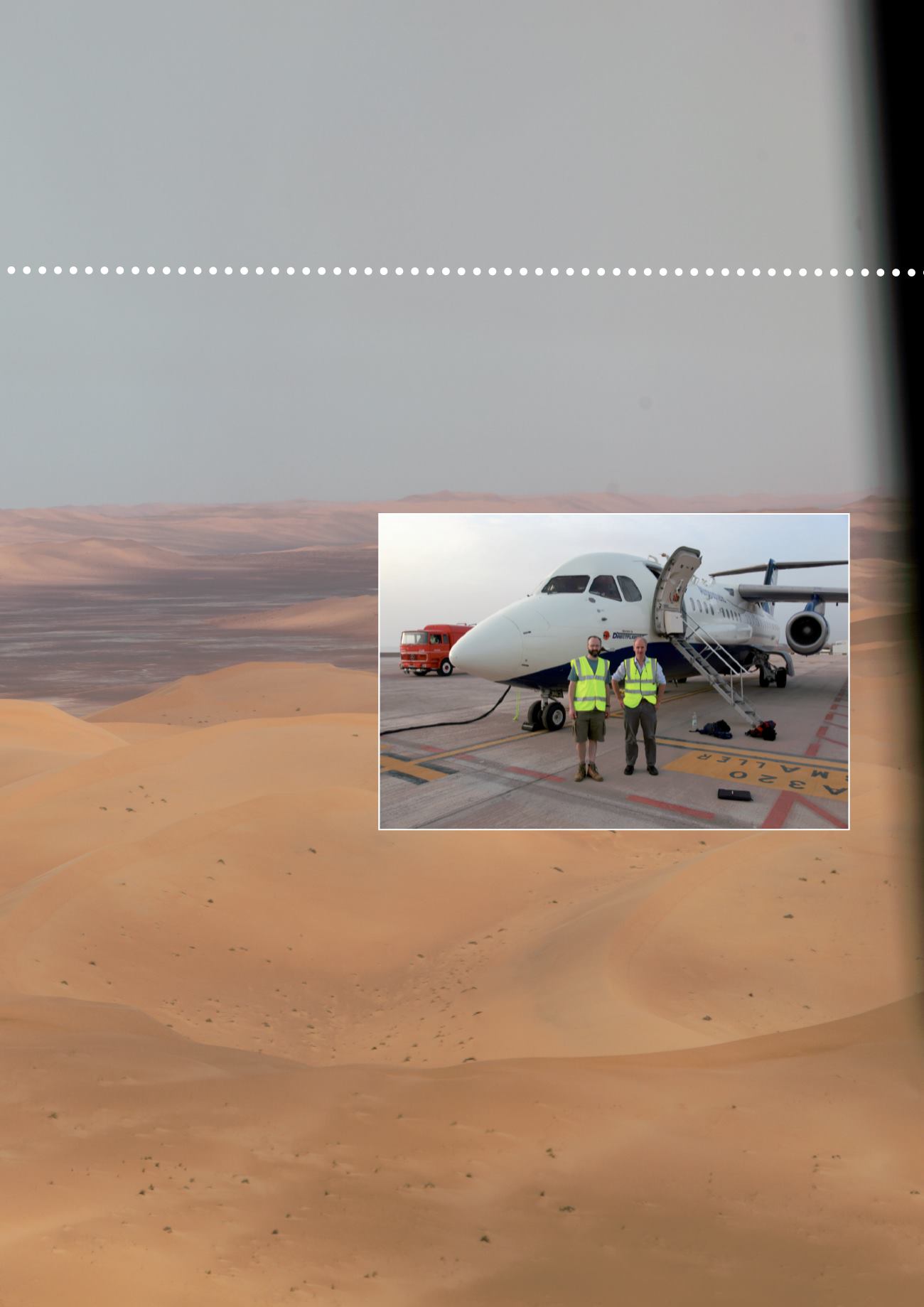
9
observational programme, funded by the Natural Environment
Research Council, was put together. We called the project Fennec
(desert fox) – reassuringly, it is not an acronym.
Fennec has been an ambitious project. Designed as a large-scale,
international, multi-institutional, multi-platform, observational,
modelling and satellite programme led from Oxford, Fennec
promised to recover the first real meteorological observations
from the remote Sahara – in the hottest months of the year. A
modern, perhaps yet unproven, approach to understanding the
climate of regions with sparse data is to run
dedicated, short-term observational campaigns
generating a very comprehensive data set
from which the workings of the weather and
then the climate can be unravelled. We already
have a view of the Sahara from satellites, but
their instruments only measure radiation and
these measurements have to be converted to
things that we really want. This is an uncertain
process for somewhere as extreme as the
Sahara for which no ‘ground truthing’ is possible.
Our solution was to establish two very large
sites with instruments measuring more than
100 variables, some several times a second,
one in north-eastern Mauritania and one on
the Mali-Algerian border in the core of that
heat low. We also deployed 10 specially made
automatic weather stations across the rest of
the heat low region, some in places where people
last went several thousand years ago. More than 1000 hydrogen
filled balloons were released to sample the lowest 10km of the
atmosphere from 4 different sites. This network of instruments
was spread out across an area about the size of Europe, but
relied on the weather coming to it. We also needed a way of
getting to the weather ourselves – quickly. The answer was a
specially instrumented four-engine aircraft, a BAe-146, which
itself measures more than 100 variables many times a second.
The aircaft can fly very low for long periods of time, so we were
able to sample the near surface weather for a cumulative total of
several thousand kilometres exactly where we wanted to in the
summers of 2011 and 2012.
Fennec has succeeded against all odds. Working in the remote
desert with research sites 1000 km from the nearest dirt road
was always going to be hard given the challenges of distance, heat
and aridity. We also had to work around the region’s insurgencies
– the Al Qaeda headquarters turned out to be only a hundred
miles or so from our main research site on the Mali-Algerian
border. We have had to suppress every detail of the project
beyond the immediate Fennec circle for security reasons. Indeed
it is hard to believe that in the summer of 2012 we were flying
at 150 feet above the desert surface over northern Mali and
deploying more than 30 tons of instruments on the ground in this
troubled region. Those 200 hours of flying time, together with
the most valuable surface data I could have imagined, have led to
new insights on what is in the middle of the Saharan furnace. We
now know what causes the immense dust storms, one of which
started on the southern edge of the Sahara and revitalised itself
in the central Sahara each day for three days before exporting its
dust to Scandinavia. This was a continental event but began life
as a modest thunderstorm. The moisture from that storm was
recycled into replacement storms each of the three days it took
to cross the Sahara; the system just wouldn’t give up. What was
a planetary scale event really depended on the small scale physics
of water and what happens when that water changes from liquid
to gas - and that in one of the driest places on Earth. Having
closely studied the data, we know what is missing from our
weather forecast models and why they struggle to simulate these
kind of events. On one of the many flights, we descended into a
fierce dust storm and flew through it for as long as fuel allowed.
When visibility became unreasonably low, the pilots pulled up to
safe altitude at 3km, still within the storm. It was just as well.
There we measured soil particles about two orders of magnitude
larger than the text books claim is possible. The hard part now is
trying to find the physics to explain what really shouldn’t exist.
That is going make driving across the Sahara and back over
Christmas before term starts look easy.
[We] had to work around the region’s insurgencies – the Al Qaeda
headquarters turned out to be only a hundred miles or so from
our main research site on the Mali-Algerian border.
Professor Richard Washington (right) and a colleague in front of the specially instrumented
BAe-146 aircraft, used to take weather measurements from within the atmosphere.


